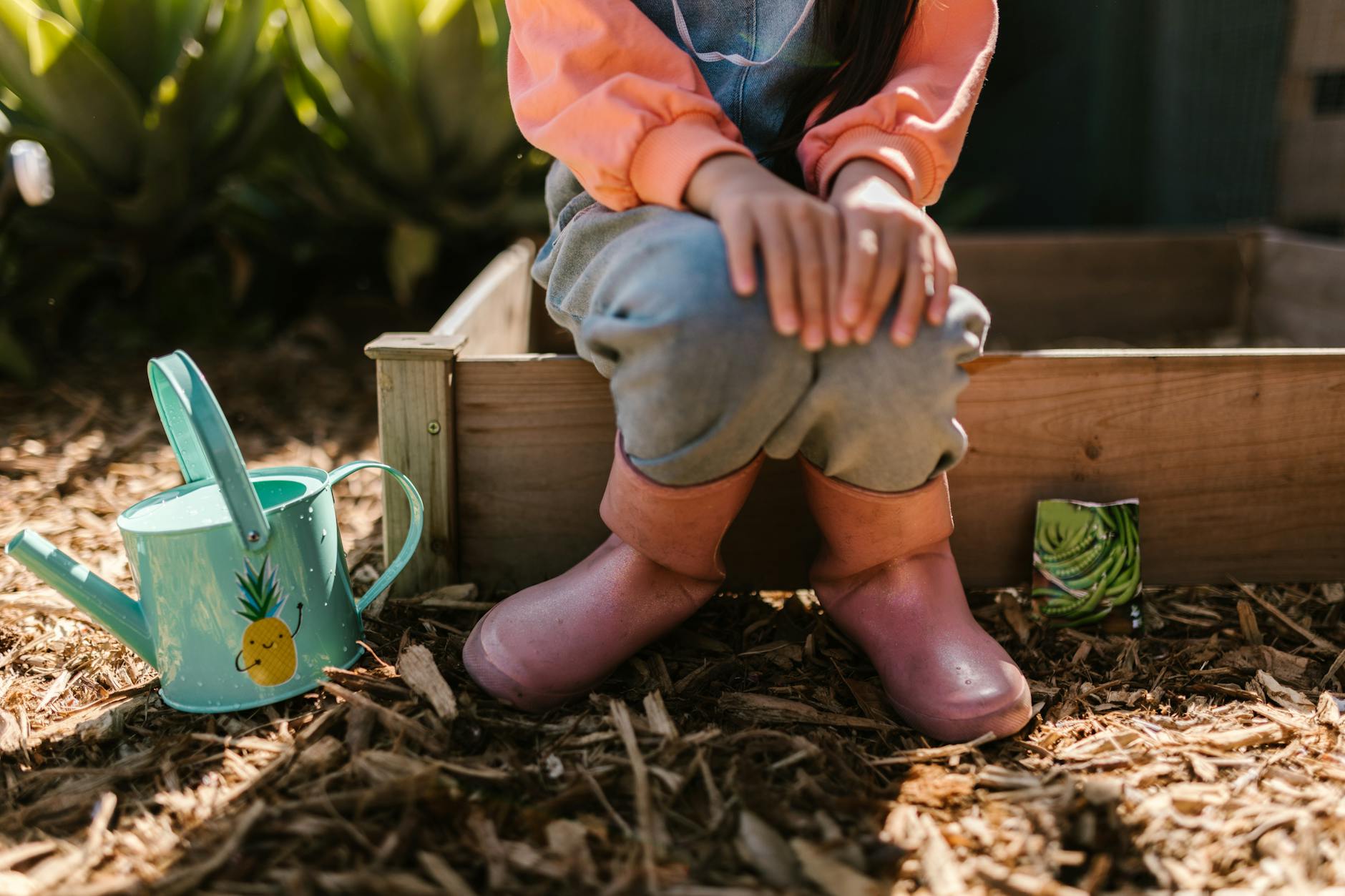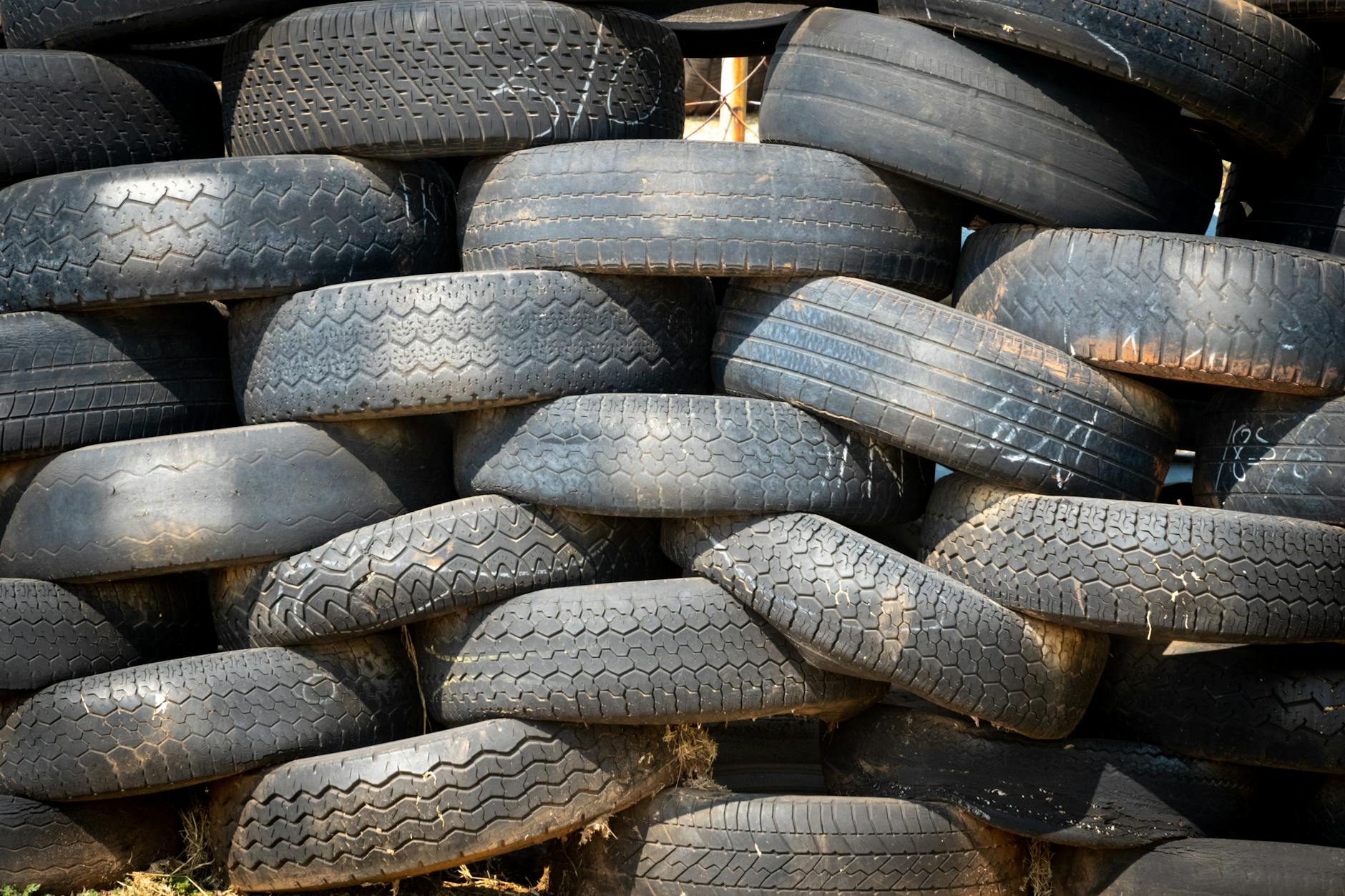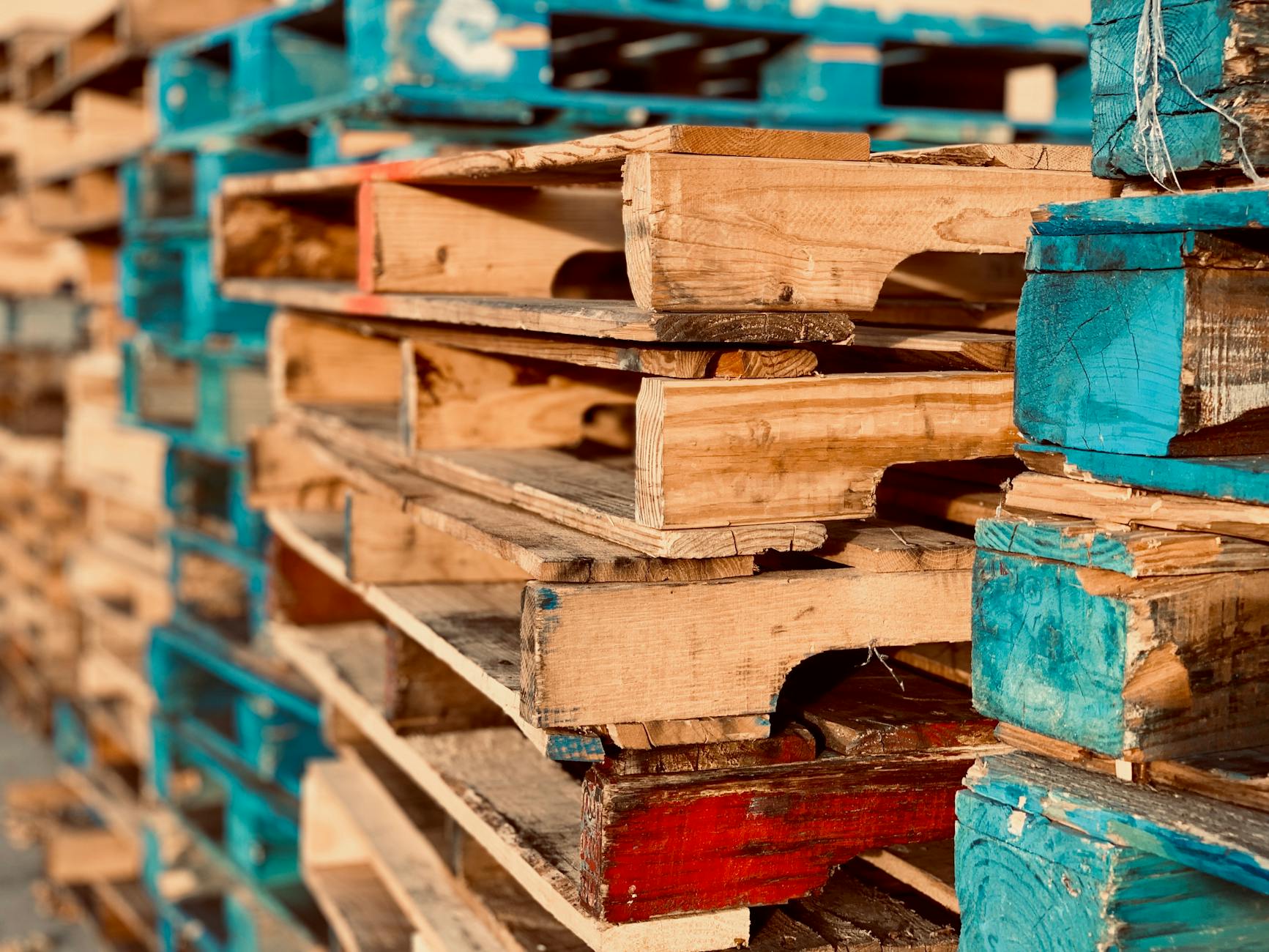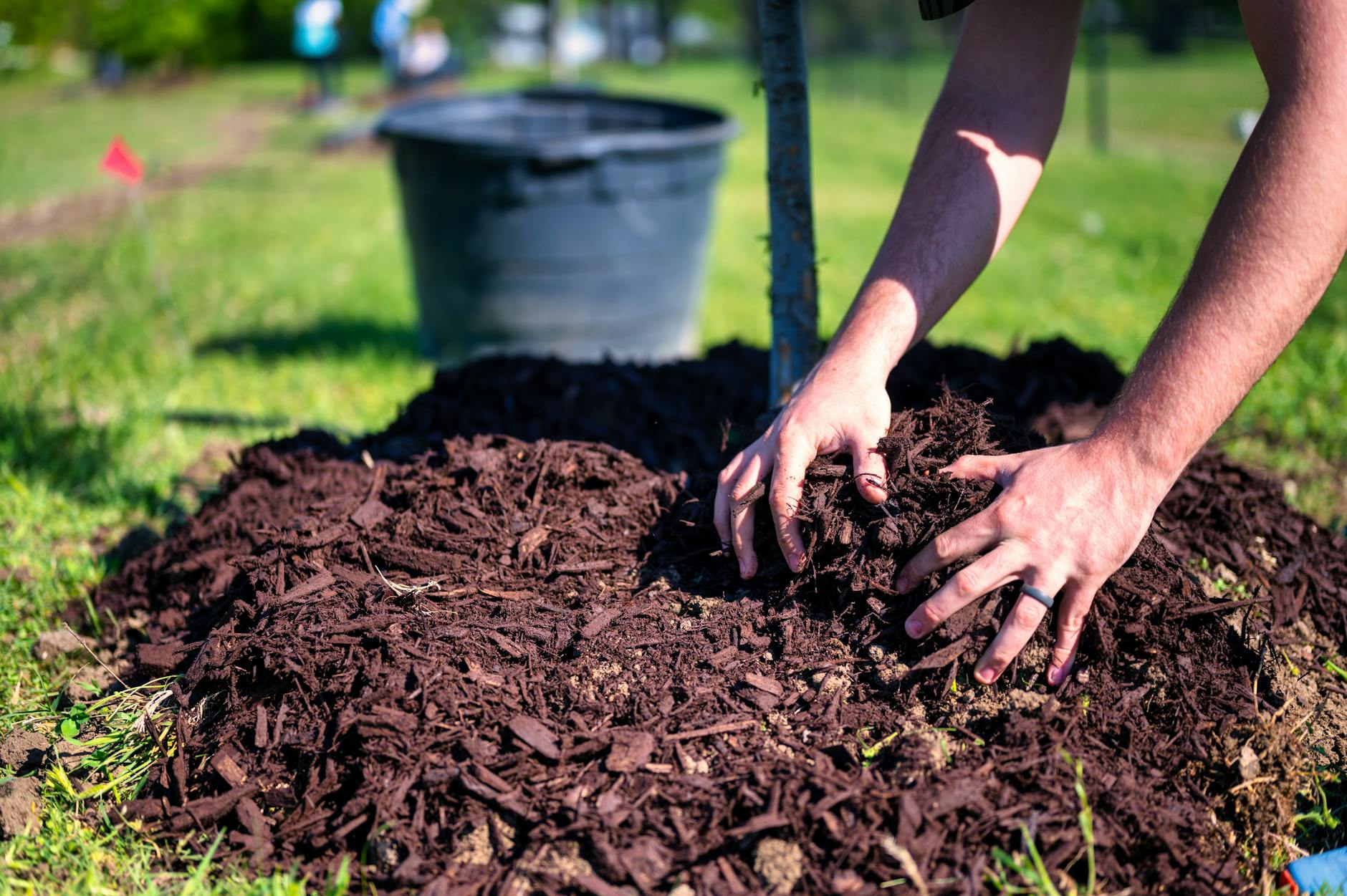{5-minute read}
In a previous post we discussed the environmental and personal health impacts of four popular mulch types for the landscape. Today, let’s dissect the clear winner and our favorite- organic wood mulch.

Hardwoods vs Softwoods.
It isn’t about the actual ‘toughness’ of the wood.
Some hardwoods are softer than softwoods. Some softwoods are harder than hardwoods. Isn’t that confusing? The classification comes from the leaf type and way the seeds are developed.
Hardwoods are broadleaved angiosperms, meaning that they produce covered seeds from pollinated flowers that develop a fruit. Walnut, maple, hickory, and birch are just a few of the examples you can find in the Ozarks. Hardwood mulches are readily available but often at a higher price point as they have a high economic value due to their strength and durability. They are enduring in the landscape thanks to their lignin content, a key structural polymer that provides rigidity and rot resistance. At the same time, since they do not break down quickly, they can take longer to release vital nutrients into the soil. As hardwoods break down, they also contribute to an increase in soil alkalinity. This is bad news for acidic loving plants such as tomatoes, blueberries, azaleas, and irises.
Softwoods are gymnosperms that produce naked seeds without a fruit covering in the form of a cone. Pine, spruce, hemlock, and cedar are common Ozarks softwoods. These mulches are lighter in weight, can have a pleasant fragrance, and often are less expensive than hardwood mulches. Some have natural properties that repel pests. They contribute to increased soil acidity during the decomposition process as well. This makes softwoods an ideal choice for your favorite acid loving plants. Learn more from Britannica.
Grind types and how they affect the nutrient cycling process.
Mulch producers obtain different textures by utilizing various sized screens and processing the wood fibers one or more times. Large pieces decompose more slowly. Small pieces return nutrients to the soil through a faster decomposition process because they are more accessible to bacteria, fungi and insects. Three common grind types are coarse, double, and fine.
Coarse Grind

Coarse, or unscreened, mulch is processed one time, giving the wood fibers a large and chunky texture that endures in the landscape. It breaks down on a slow schedule so it can require multiple applications of fertilizer per growing season but may only need refreshed every 3-5 years. Annual application is not advised in most situations due to the slow decomposition rate and the potential of creating mulch volcanoes around root flairs and crowns of plants. Learn more from Penn State.
Double Grind

Double grid has been processed and screened twice resulting in an intermediate texture. The smaller pieces will return their nutrients to the soil more quickly while larger pieces will endure in the landscape. A mixed textured mulch like this is usually refreshed on a 2–3-year schedule. Since its decomposition rate is somewhat slow it can still require fertilizer amendments, increasing your product consumption and time investment to apply.
Fine Grind
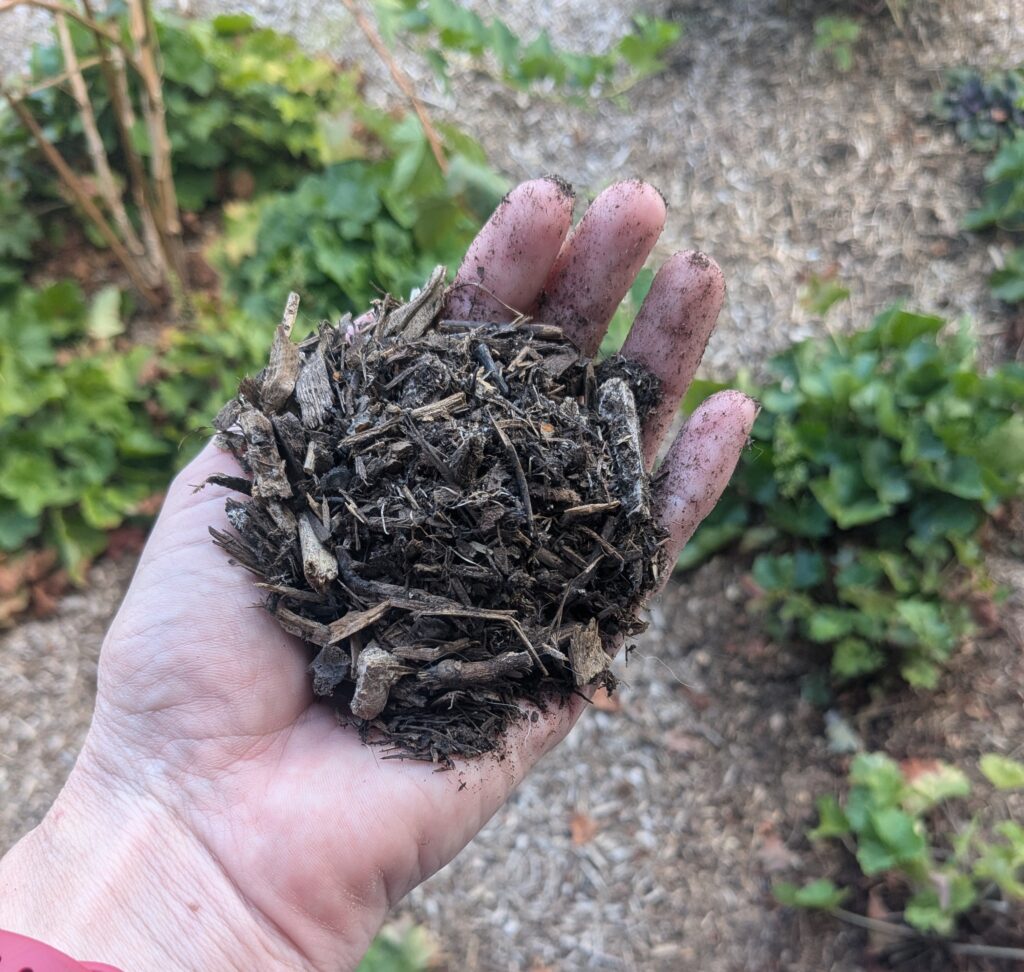
Fine mulch is processed multiple times and screeded to avoid large to intermediate sized pieces. The small texture of a fine grind benefits landscapes in many ways. It is softer to the touch so it’s easier on paws and bare feet. It breaks down quickly and adds critical nutrients and texture to the soil. It also knits together helping to reduce erosion and suppress weeds more readily than larger grinds.
What about bark nuggets and pine needles?
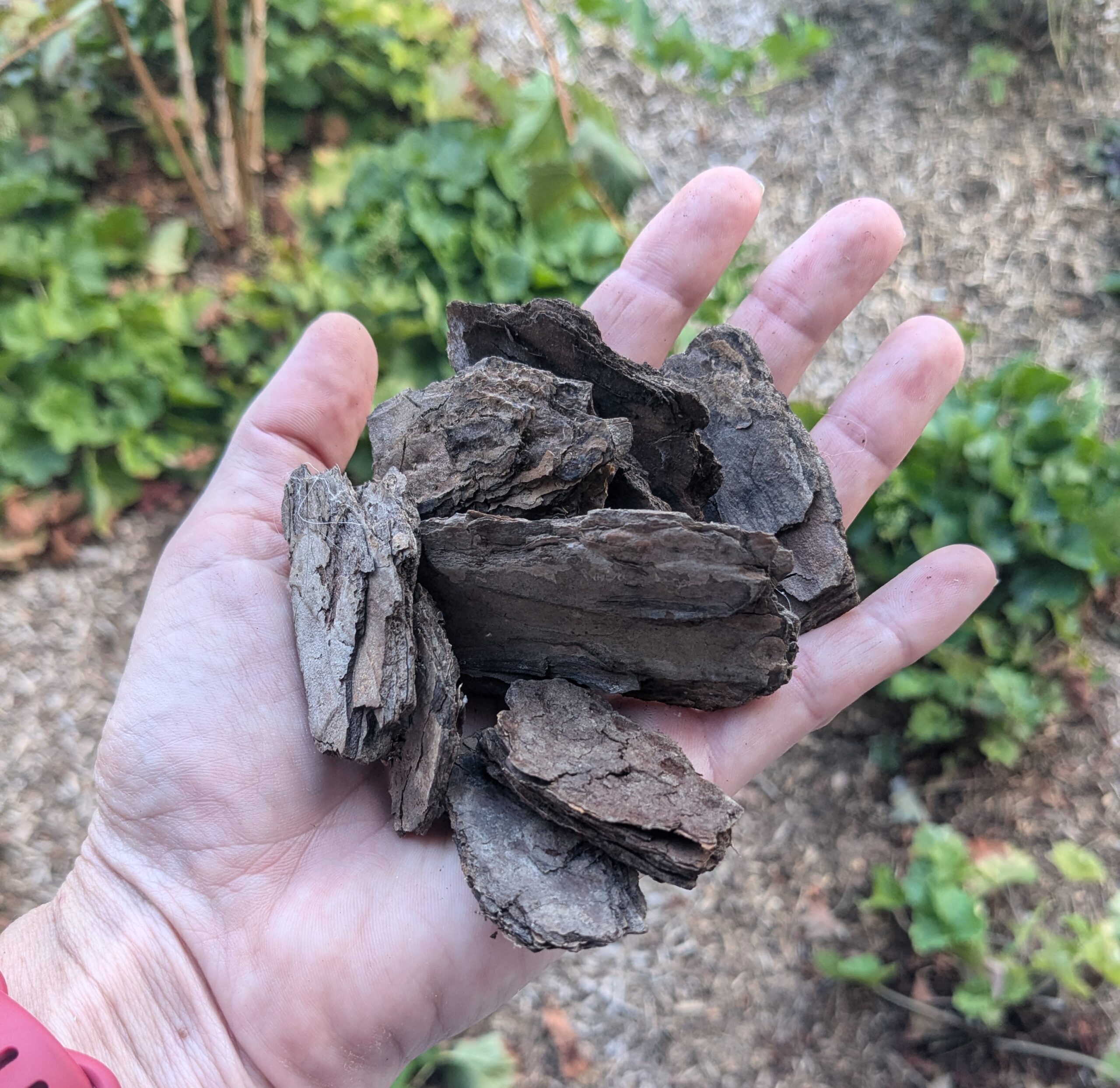
Pine bark nuggets and pine needles are popular because they are inexpensive, readily available, and extremely lightweight. However, nuggets are large and do not decompose quickly. Due to their lightweight nature, they can float away during rain events or blow away with wind making them a poor choice for slopes and erosion control.
Pine needles are so light that mulching with them requires three to four inches in depth in order to keep weed seeds from germinating. This can make growing shrubs, trees, or short plants difficult because there’s simply too much material encroaching on the root flair or crown of the plant. Learn more from Ohio State University.
Composted fine ground wood mulch. Our favorite.
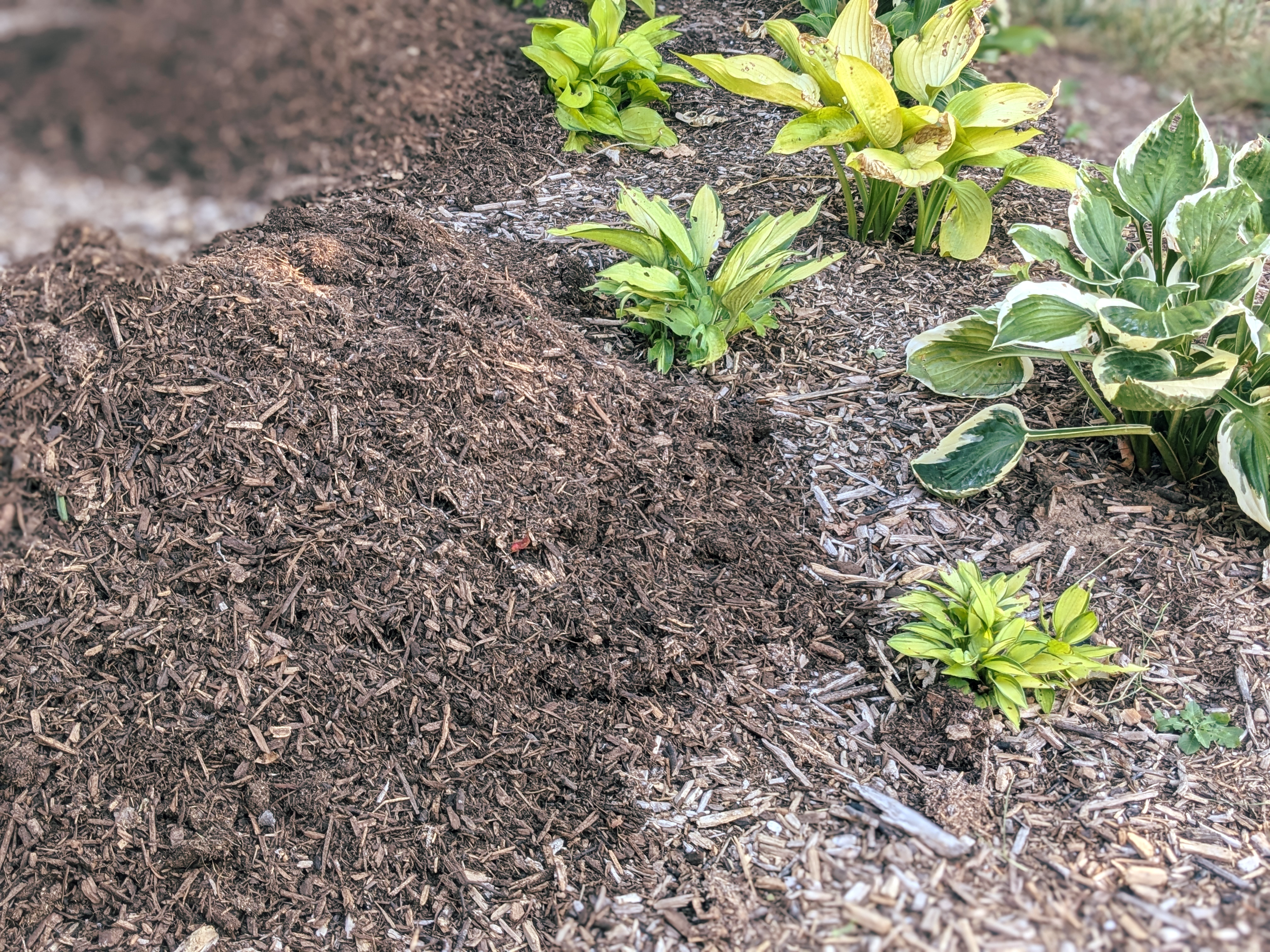
Our local yard waste recycling center produces the best mulch we’ve ever worked with. It checks all the boxes!
It’s sustainable.
Produced from brush and tree debris from arborists and property owners. Using this product keeps our natural resources in our soils and out of the landfill.
It’s available.
There’s hardly a shortage of raw materials from landscapes and our temperate deciduous forests. Flashback to the 2007 ice storm.
It works for many situations.
Since it’s a composted product it has a dark and uniform color making it aesthetically pleasing in the landscape. As a mixture of hardwoods and softwoods the pros from each help to weaken the cons from the individual wood types. It has a higher bulk density than coarse mulch, increasing its ability to hold water, assist in stormwater runoff mitigation, and it is less likely to float away during rain events. Because it holds more water it is far less combustible. Your insurance agent will love that! Learn more from Biocycle and Colorado State University.
*Pollen to Petal is not affiliated with, nor receives any compensation from any link or company mentioned within this post*
